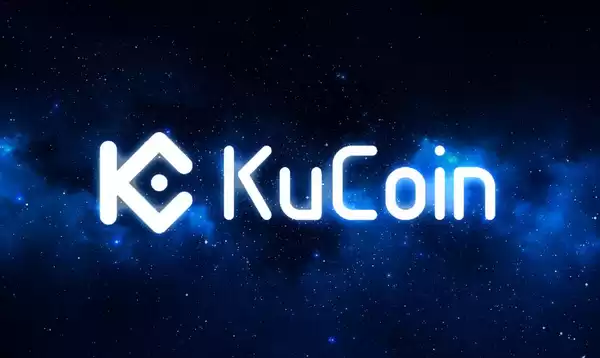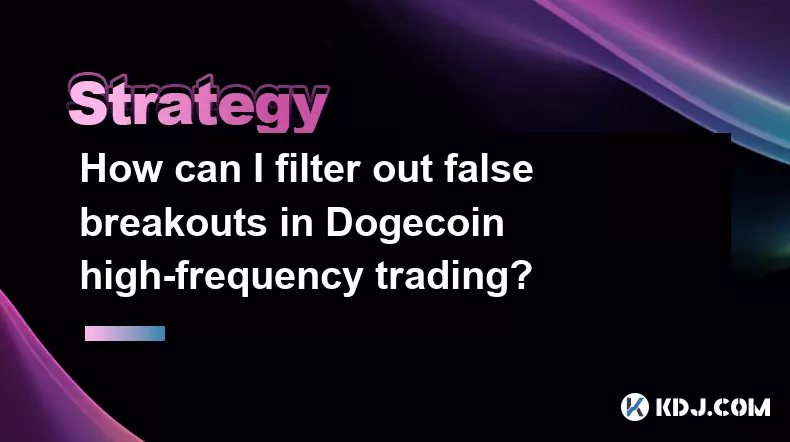-
 bitcoin
bitcoin $112195.049338 USD
2.42% -
 ethereum
ethereum $4124.915858 USD
2.81% -
 tether
tether $1.000570 USD
0.02% -
 xrp
xrp $2.861568 USD
2.25% -
 bnb
bnb $1000.346670 USD
3.04% -
 solana
solana $209.070819 USD
3.38% -
 usd-coin
usd-coin $0.999870 USD
0.02% -
 dogecoin
dogecoin $0.235379 USD
2.65% -
 tron
tron $0.335681 USD
-0.20% -
 cardano
cardano $0.803501 USD
3.38% -
 hyperliquid
hyperliquid $47.120881 USD
3.56% -
 chainlink
chainlink $21.501300 USD
3.44% -
 ethena-usde
ethena-usde $1.000571 USD
0.02% -
 avalanche
avalanche $29.793378 USD
3.62% -
 stellar
stellar $0.366964 USD
2.42%
KuCoin contract skills
Navigating KuCoin contract trading necessitates understanding perpetual contracts, choosing the right trading environment, setting up your account, mastering order types, implementing risk management strategies, utilizing technical analysis, and exploring advanced trading techniques.
Nov 08, 2024 at 05:42 am

KuCoin Contract Skills: A Comprehensive Guide
KuCoin is a renowned cryptocurrency exchange that offers a diverse range of trading products, including spot trading, margin trading, and perpetual contracts. Perpetual contracts, also known as inverse swaps, are a popular derivative instrument that allows traders to speculate on the future price of an underlying asset without the need for physical delivery. KuCoin's contract trading platform is user-friendly and offers a comprehensive suite of features that cater to both novice and experienced traders.
To navigate the complexities of KuCoin contract trading, it is imperative to acquire a solid understanding of the fundamental principles and strategies involved. This article will delve into the essential skills required to trade contracts effectively on KuCoin, providing a step-by-step guide to enhance your trading acumen.
1. Understanding Perpetual Contracts
Perpetual contracts are financial instruments that derive their value from the underlying asset they represent, such as Bitcoin (BTC) or Ethereum (ETH). These contracts offer unique advantages over traditional spot trading, including:
- Leverage: Traders can utilize leverage to amplify their potential returns. KuCoin provides leverage options ranging from 1x to 100x, allowing traders to magnify their trading positions.
- Perpetual Nature: Unlike traditional futures contracts, perpetual contracts do not have a predefined expiration date. This allows traders to maintain their positions indefinitely or until they decide to close them.
- Inverse Pricing: Perpetual contracts are priced inversely to the underlying asset. This means that the contract price increases as the underlying asset price decreases, and vice versa.
2. Choosing the Right Trading Environment
KuCoin offers two trading environments for perpetual contracts: a web-based platform and a mobile app. Both platforms share the same core features, but each caters to different trading preferences.
- Web-Based Platform: The web-based platform offers a customizable interface with advanced charting tools, detailed order books, and real-time market data. It is ideal for traders who prefer a comprehensive and clutter-free trading experience.
- Mobile App: The KuCoin mobile app provides a convenient and streamlined trading experience. It offers essential trading features such as order placement, position management, and price alerts, making it suitable for traders who value mobility and ease of access.
3. Setting Up Your Trading Account
- Create a KuCoin account: The first step is to register for a KuCoin account. You will need to provide personal information and undergo a Know-Your-Customer (KYC) verification process to unlock the full range of trading features.
- Fund your account: Once your account is verified, you can deposit funds to start trading. KuCoin supports a variety of deposit methods, including cryptocurrency, fiat currency, and credit card.
- Choose a trading pair: Select the perpetual contract trading pair you wish to trade, such as BTCUSDT or ETHUSDT. The trading pair represents the underlying asset and the quote currency.
4. Basic Order Types
- Market Order: A market order is an instant execution order that matches your order with the best available price in the order book. Market orders are suitable for quick execution or when the market is moving rapidly.
- Limit Order: A limit order is an order to buy or sell a contract at a specific price or better. Limit orders can be placed above or below the current market price. They are useful for executing trades at desired price levels.
- Stop Order: A stop order is an order to buy or sell a contract once the price reaches a specified trigger price. Stop orders are used to enter or exit trades at specific price points.
- Take-Profit Order: A take-profit order is an order to sell a contract once it reaches a specified profit target. Take-profit orders are used to lock in profits and protect against potential losses.
5. Risk Management Strategies
- Position Sizing: Determine the size of your position based on your risk tolerance and trading capital. Avoid risking more than you can afford to lose.
- Stop Loss Orders: Use stop loss orders to limit potential losses by automatically closing your position when the price reaches a predefined level.
- Trailing Stop Loss: A trailing stop loss is a type of stop order that moves dynamically with the price, ensuring that you lock in profits while protecting against sharp price reversals.
- Hedging: Hedge your positions by opening multiple trades with opposing directions. This is a risk management technique used to minimize potential losses.
6. Technical Analysis
- Charting: Utilize technical analysis tools to identify trends, patterns, and support/resistance levels. Charting helps traders make informed trading decisions.
- Indicators: Technical indicators are mathematical formulas that analyze price data to identify potential trading opportunities. Common indicators include moving averages, Bollinger Bands, and Relative Strength Index (RSI).
- Candlestick Patterns: Candlestick patterns are patterns formed by the price bars on a chart. They can provide insights into market sentiment and potential price reversals.
7. Advanced Trading Strategies
- Arbitrage: Exploit price discrepancies between different exchanges to make quick profits.
- Scalping: Place frequent trades to accumulate small profits.
- Range Trading: Trade within a predefined price range to take advantage of market fluctuations.
- Grid Trading: Execute a series of buy and sell orders at predetermined intervals to profit from market volatility.
Disclaimer:info@kdj.com
The information provided is not trading advice. kdj.com does not assume any responsibility for any investments made based on the information provided in this article. Cryptocurrencies are highly volatile and it is highly recommended that you invest with caution after thorough research!
If you believe that the content used on this website infringes your copyright, please contact us immediately (info@kdj.com) and we will delete it promptly.
- Mutuum Finance Presale Defies Market Volatility: A New Era for DeFi?
- 2025-09-30 00:45:13
- Floki Crypto: Analyst Signals Potential Pump Setup – Ready to Ride the Wave?
- 2025-09-30 00:45:13
- Hypurr Hysteria: NFTs, Floor Prices, and Hyperliquid's Wild Ride
- 2025-09-30 01:45:13
- Remittix: The Crypto World's Next XRP?
- 2025-09-30 00:50:01
- Whales, MAGACOIN, and Presale ROI: Riding the Crypto Wave
- 2025-09-30 00:50:01
- ChatGPT, Crypto Market, and Hidden Gems: Unearthing Opportunities in the Digital Gold Rush
- 2025-09-30 01:05:14
Related knowledge

Practical parameter settings for a Bitcoin multi-timeframe moving average system
Sep 18,2025 at 10:54pm
Optimizing Timeframe Combinations for Bitcoin Trading1. Selecting appropriate timeframes is crucial when building a multi-timeframe moving average sys...

How can I filter out false breakouts in Dogecoin high-frequency trading?
Sep 22,2025 at 01:00am
Understanding False Breakouts in Dogecoin Trading1. A false breakout occurs when Dogecoin's price appears to move beyond a defined support or resistan...

Techniques for identifying tops and bottoms in the Bitcoin on-chain NVT model
Sep 20,2025 at 07:54pm
Understanding the NVT Model in Bitcoin Analysis1. The Network Value to Transactions (NVT) ratio is often described as the 'P/E ratio' of the cryptocur...

What does the surge in open interest in Bitcoincoin futures mean?
Sep 20,2025 at 11:18pm
Understanding the Surge in Dogecoin Futures Open Interest1. A surge in open interest within Dogecoin futures indicates a growing number of active cont...

How can I use the Ethereum USDT premium to gauge market sentiment?
Sep 18,2025 at 11:55pm
Understanding the Ethereum USDT Premium1. The Ethereum USDT premium refers to the price difference between USDT (Tether) traded on Ethereum-based plat...

What should I do if Ethereum staking yields decline?
Sep 20,2025 at 06:18am
Understanding the Causes Behind Declining Ethereum Staking Yields1. The Ethereum network transitioned to a proof-of-stake consensus mechanism with the...

Practical parameter settings for a Bitcoin multi-timeframe moving average system
Sep 18,2025 at 10:54pm
Optimizing Timeframe Combinations for Bitcoin Trading1. Selecting appropriate timeframes is crucial when building a multi-timeframe moving average sys...

How can I filter out false breakouts in Dogecoin high-frequency trading?
Sep 22,2025 at 01:00am
Understanding False Breakouts in Dogecoin Trading1. A false breakout occurs when Dogecoin's price appears to move beyond a defined support or resistan...

Techniques for identifying tops and bottoms in the Bitcoin on-chain NVT model
Sep 20,2025 at 07:54pm
Understanding the NVT Model in Bitcoin Analysis1. The Network Value to Transactions (NVT) ratio is often described as the 'P/E ratio' of the cryptocur...

What does the surge in open interest in Bitcoincoin futures mean?
Sep 20,2025 at 11:18pm
Understanding the Surge in Dogecoin Futures Open Interest1. A surge in open interest within Dogecoin futures indicates a growing number of active cont...

How can I use the Ethereum USDT premium to gauge market sentiment?
Sep 18,2025 at 11:55pm
Understanding the Ethereum USDT Premium1. The Ethereum USDT premium refers to the price difference between USDT (Tether) traded on Ethereum-based plat...

What should I do if Ethereum staking yields decline?
Sep 20,2025 at 06:18am
Understanding the Causes Behind Declining Ethereum Staking Yields1. The Ethereum network transitioned to a proof-of-stake consensus mechanism with the...
See all articles


























![[Pycoin] PI Coin -Shocking Listance of Pycoin?! 'Rebellion' This time ... Pay attention to #paikoin [Pycoin] PI Coin -Shocking Listance of Pycoin?! 'Rebellion' This time ... Pay attention to #paikoin](/uploads/2025/09/29/cryptocurrencies-news/videos/pycoin-pi-coin-shocking-listance-pycoin-rebellion-time-pay-attention-paikoin/68da82f23cec1_image_500_375.webp)















































